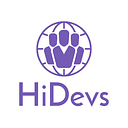Unlocking the Potential of Retrieval-Augmented Generation and Vector Databases
In the rapidly evolving landscape of artificial intelligence (AI), Retrieval-Augmented Generation (RAG) has emerged as a powerful approach that synergizes information retrieval with generative capabilities. This innovative technique enhances generative models by integrating relevant external information during the generation process, thereby elevating the accuracy, contextual relevance, and breadth of their outputs. Central to the success of RAG systems is the integration of efficient vector databases, which serve as the backbone for managing and querying high-dimensional data representations.
What is Retrieval-Augmented Generation?
RAG combines the strengths of retrieval systems and generative models. While retrieval systems efficiently locate relevant knowledge from vast datasets, generative models excel at producing coherent, human-like text. Together, they address limitations of purely generative or retrieval-based approaches, enabling applications such as question answering, summarization, and conversational AI.
In a typical RAG pipeline:
- Query Input: The system receives a query or prompt.
- Information Retrieval: A retrieval module searches for relevant documents or passages using vector similarity search.
- Reranking: The retrieved results are prioritized for relevance.
- Generative Output: The generative model uses these retrieved documents as context to produce an enriched response.
The Role of Vector Databases
Vector databases are specialized tools designed to store and query high-dimensional vector representations of unstructured data like text, images, and audio. They are indispensable for RAG systems, enabling efficient and scalable semantic search.
Key features of vector databases include:
- High-Dimensional Data Management: Support for storing vectors derived from embeddings.
- Approximate Nearest Neighbor (ANN) Search: Enables rapid similarity-based searches.
- Scalability: Handles billions of vectors with low latency.
- Integration Flexibility: Compatible with popular AI frameworks and programming languages.
Popular Vector Databases and Libraries
When selecting a vector database for RAG, it’s essential to consider scalability, performance, and community support. Here’s a comparison of some leading options:
- FAISS: A robust library ideal for static data with minimal updates.
- HNSWLib: Offers CRUD support and concurrent read-write operations.
- Milvus: An open-source solution excelling in scalability and distributed architecture.
- Weaviate: Provides flexible indexing and supports hybrid search methods.
- Pinecone: A managed service focusing on ease of use and scalability.
Evaluating Vector Database Features
When choosing a vector database, consider the following:
- Indexing Strategies: Options like FLAT (exact search), IVF_FLAT (balanced speed and accuracy), and HNSW (speed-focused).
- Search Methods: Exact vs. approximate search based on use-case requirements.
- Integration and Support: Ensure compatibility with embedding models and existing tech stacks.
- Enterprise Features: Regulatory compliance, role-based access control, and multi-tenancy.
- Cost Efficiency: Balance between in-memory and disk-based indexing for optimal storage and performance.
Innovations and Future Directions
The field of RAG and vector databases is evolving rapidly. Current advancements include:
- Hybrid Search: Combining vector and keyword-based search for improved relevance.
- Dynamic Position Sizing: Adapting query results based on application-specific confidence levels.
- Explainability: Providing insights into the rationale behind retrieved and generated outputs.
Future research promises deeper integration with knowledge graphs, enhanced reasoning capabilities, and low-resource domain adaptation, expanding the applicability of RAG systems across industries.
Conclusion
Retrieval-Augmented Generation, powered by efficient vector databases, represents a significant leap forward in AI. By enabling scalable, context-rich interactions, these technologies unlock new possibilities for intelligent systems, from personalized assistants to advanced research tools. As innovations continue to reshape the landscape, RAG systems and vector databases will remain at the forefront of AI-driven transformation.
Learn and Grow with Hidevs:
• Stay Updated: Dive into expert tutorials and insights on our YouTube Channel.
• Explore Solutions: Discover innovative AI tools and resources at www.hidevs.xyz.
• Join the Community: Connect with us on LinkedIn, Discord, and our WhatsApp Group.
Innovating the future, one breakthrough at a time.
